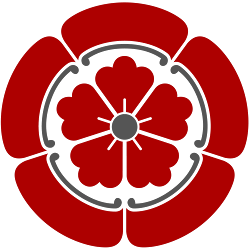All sports have their traditions, whether it’s rules of play, training costumes, or expected standards of behaviour. In that respect, aikido is no different.
However, since aikido is rooted in Japanese culture, it can be difficult to understand for people who are unfamiliar with traditional martial arts, at least in the beginning.
This is not something to worry about if you are thinking of starting. Everybody should figure out the basics of what aikido is about after a few training sessions. However, if you want to know more, here is a short explanation, based around two key concepts, kihon and ukemi.
Kihon
Most aikido training is dedicated to the development of kihon (基本), meaning ‘basics’ or ‘fundamentals’. In other words, training is not fighting. It is certainly not about trying to recreate self-defence scenarios. Instead, the exercises are meant—over time—to build up fundamental fighting skills.
One fundamental skill is tai sabaki (体捌き): learning to move your body freely and efficiently, to stay relaxed and keep a stable posture.
Another fundamental skill is understanding how to use contact. That is why beginners’ practice often starts with a partner grabbing your wrist. This is not a self-defence scenario. Instead, it is a method for learning how it feels to be grabbed, how to keep your body free when under restraint, and how to use that connection in order to take over your partner’s centre of gravity.
Fundamental training develops perception of distance and timing (maai 間合い). When the attacker progresses from grabbing the wrist to the elbow or shoulder, they are moving closer and applying more control. We learn to adapt our techniques accordingly. When they progress on to simple strikes, the distance changes again, and now we must also start to develop timing as well.
Aikido has perhaps hundreds of techniques, but very many are variations on a small core set. The purpose of learning so many techniques is not to give you a huge number of options, but rather to develop a set of fundamental skills that you can apply in any situation.
Ukemi
In normal practice, there are two different roles, with each partner taking turns in each role. One partner initiates an attack (a grab or strike) and is afterwards thrown or pinned. This person is called uke (受け), meaning ‘receiver’, the person who receives the throw or pin. The defender is tori (取り), meaning ‘taker’, the person who takes control of the action.
The role of uke is called ukemi (受身), and this is crucial to the development of good aikido practice.
For beginners, ukemi involves learning to fall safely, without injury or fear of injury. To avoid injury, throws are executed very gently in the beginning. But when a person becomes more confident at falling, they give their partner the opportunity to practise with greater power, eventually approaching a more realistic application.
At post-beginners level, ukemi involves learning to stay safe, by recognising where you are vulnerable and moving into a better position. This is why aikido is not simply throwing and falling down, but involves continuous movement, as both partners work intelligently to improve their position.
At an advanced level, ukemi involves constructive resistance. An experienced uke plays the same role, as the person who falls, but knows how to put tori under more and more pressure, according to their level. A knowledgeable uke therefore takes on the role of teacher. He or she will not block the technique of a beginner still trying to learn the basics, but they will show a more experienced person where their weaknesses are.
Advanced ukemi requires knowledge and experience. It is not recommended to try to block a technique without knowing what you’re doing. A person who is either skillful or simply very strong may be able to apply it anyway, leading to potential injury.
It also requires good judgment. An uke who blocks their partner just to satisfy their own ego will teach nothing and learn nothing themselves.
The very best uke can allow their partner to throw freely and with all of their power, while at the same time helping them to recognise where they need to improve. These people embody the very best ideals of aikido training.
Conclusion
The aikido training method may be not immediately understandable to people who are used to modern sports training, since it is based on an older Japanese tradition. There is much more going on than meets the eye.
The method evolved originally as a way to learn and practise potentially dangerous techniques in a controlled environment. There are other reasons to preserve it though. It teaches you to experience ‘winning’ as well as ‘losing’ in equal measure throughout every class. You must also learn to read and adapt precisely to every training partner, regardless of their level or ability. These aspects offer life lessons that go beyond martial arts.
With patience and perseverance, anyone can learn this art and appreciate the richness of its tradition.
